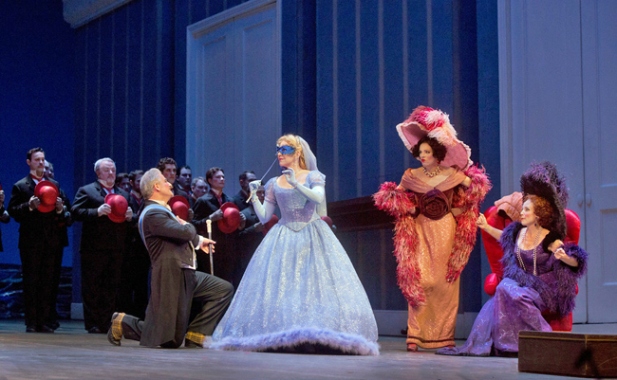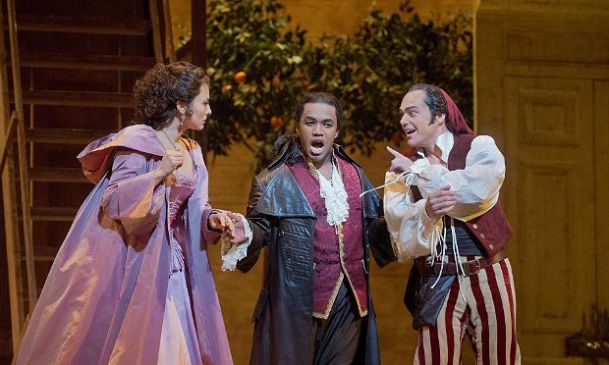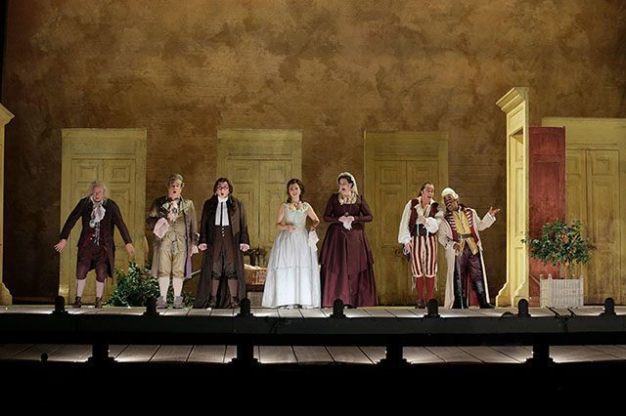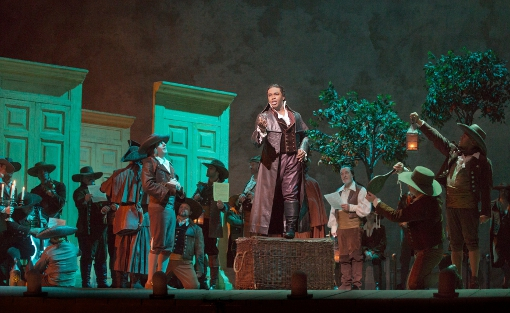Close Shaves

Typical Barber Shop ca. 1970s
Oh, brother! It’s that time of the month again, when one’s mane starts to look a bit straggly and those sideburns are in dire need of a wee trim.
Did you ever get the feeling that no matter where you went or whatever hairstyling establishment you happened to frequent, you could never get the perfect haircut to suit your taste, style and looks?
That’s how it was for me (uh, when I had a full mop of hair, that is). In my youth I wandered through a host of hair-clipping joints and local barbershops, always hopeful but never fully satisfied with the results.
That elusive search for the perfect haircut can take on the semblance of a hunt for the Holy Grail. This is something that has taken me years of aggravation to understand and appreciate, that never-attained but forever longed-for journey of discovery. It can take the shape of various forms and in various manifestations. And don’t you dare think that women have it easier! Why, it’s quite the opposite! Getting the right hairdo is just as frustrating for them as it for us — maybe more so.
The art of caring for one’s coiffure is, indeed, just that: an unreachable and strictly unattainable achievement in craft as well as the latest fashion trends. In ancient times, men and women of means often had their hair braided (only to prove that they could), while they just as regularly could have had their noggins shaved. These served as viable options for many a generation until the arrival of the Swinging Sixties and Seventies. Before (and, in hindsight, many years afterward), it was considered common practice to keep the hairline closely cropped.
Actually, the mania for long hair and full-facial whiskers started with the early settlers and the notorious mountain men, i.e. those rugged individualists in the masculine mold of your average Jeremiah Johnson. A bit later, during the Civil War years, extreme head and facial hair were the norm, due to the lack of equipment or, more likely, the dearth of individuals available to do justice to the style of the period.
About every other generation or so, the business of keeping one’s tresses lengthy or shortened undergo alteration. This piece is about those times when the novelty of keeping your hair long eventually wears off. It’s then that we’re faced with the act of doing something about it. And where does one go? Where else but the neighborhood barbershop!
The Barber of the Block
The search for a decent haircut began, basically enough, in one’s hometown. And there were plenty of enterprises to choose from, from Coy Powell’s Barbershop to Aunt Irma’s Place. These small business shops served the locals well for any number of years.
Indeed, the most fascinating aspect of all these myriad enterprises was their colorful epithets, used primarily as an attraction to potential customers: Joe’s Barbershop, The Italian Barber, Florio’s Hair Styling Emporium, Ye Olde Barber Shoppe (note the old English lettering), Your Tonsorial Palace — these were familiar and ongoing concerns geared mostly to males.
You might even call them mini-history museums. As a matter of fact, much has changed since the heyday of the “shave and a haircut, two bits” mantra of yore. I “fondly” remember the sound those crude ancient hair-cutting utensils used to make: obtrusive, whirring noises that smacked of another era entirely when getting a haircut was deemed a rite of passage for young men. However, for kids it was one long, laborious wait.
The racial makeup of the local barber pool ran the gamut of ethnicities, from Eastern European and Eurasian to Caribbean and South American. Many of our homegrown haircutters proved to be of Hispanic origin, while some were decidedly Mediterranean in looks and lineage (Italian, Greek) or Middle Eastern (Arabic and Lebanese, even Turkish). I’ve known a few Cuban and Puerto Rican barbers in my time, along with a smattering of African Americans. None of them were young by the standards of the day, and practically all of them (with rare exceptions) were non-natives.
Interestingly, Carmen Miranda, the entertainer known as the Brazilian Bombshell, had a father, José Maria Pinto da Cunha, who when he immigrated to Rio de Janeiro from Portugal took up the barbering trade in order to make ends meet. Regrettably for Seu Pinto, in those turn-of-the-century times engaging in a profession of cutting men’s hair was considered a rung or two above that of a streetwalker (go figure!).
How times have changed…
Robert Fiance Beauty School

A day in a hair stylist’s life: Robert Fiance Beauty School
As it happened, choices were limited as to where one could go to get a decent trim. An alternative appeared in the early to mid-Seventies, the so-called beauty academy or haircutting school. A relatively benign and unassuming storefront, for the most part the Robert Fiance Beauty School (established between the 1930s and 1950s) was staffed, on the Grand Concourse in the Bronx (where I grew up), by youthful and moderately “experienced” beauty salon students — all eager to please.
I was frequently attended to by both decent and poor hair-cutting aspirants on my monthly Saturday sojourns to the school. I usually got my money’s worth, certainly nothing that I would describe as an outright embarrassment.
The shop was clean and well run, and the charges were below your average rate for a haircut in high-priced New York. The downside of going to such a place was that you ran the risk of getting scalped, both figuratively and literally. It was best to get a second or third opinion before venturing forth on your own.
It paid, too, to get a few reliable recommendations from those who had frequented the better known establishments in one’s immediate vicinity. That’s how I happened to run across the next item on my list, Manzana Hair Cutters.
Manzana Hair Cutters
The name was simply a business moniker, what we call a DBA (or “Doing Business As”), a legitimate enterprise — unless served as a front for other activities.
On the “good word” of a customer of a place I used to work at in the mid-1970s (a policeman I’ll call “Bill,” or the guy with the oh-so-cool haircut), I took time off one day to go several blocks down the street and up a steep walkway to a second-floor loft on the Lower East Side.
I had to knock several times before someone decided to let me in. The person who opened the door seemed a trifle surprised at my presence. I told this suspicious individual that I was looking for Mr. Manzana. He rudely answered, “There’s no Mr. Manzana here.” I was taken aback by his snappy response, but plowed on nonetheless. When I informed him that “Bill” was the guy who sent me, he allowed me to enter.
No sooner did I set foot in the salon when I suppressed a mild shock at what I saw. This wasn’t your recognizable, everyday beauty salon or haircutting parlor, but a ramshackle warehouse. The majority of the so-called “stylists” were either gay or transvestites, something I wasn’t prepared to deal with back then. Still, I remembered how nice my buddy “Bill” looked and how much he praised Manzana’s abilities, so I swallowed what pride I had left and patiently waited my turn.
The head stylist finally came over and, before I could open my mouth, began to berate me for being a half-hour late. This forced me to assume a defensive position. I told this irate fellow that I was coming to his establishment on my lunch hour, that our business demanded we serve our customers first before taking off for lunch (not that he cared one whit for his customers).
Not impressed with my explanation, in a huff he pointed to one of the other stylists and told me to go wait in his chair. The other stylist, who was just as annoyed as the owner by my tardiness, took one look at me and launched into a verbal invective about having to give up HIS lunch hour to serve my needs.
Oh, well, so much for sympathy from a bunch of devils …
As for the haircut, it wasn’t any great shakes, if you get me drift. Nothing special or extraordinary, more of a cut and a snip and a vague swirl of the scissors; the stylist swatted my head this way and that, and hither and yon. I’ll put it to you this way: it was more show than substance. In the end, I got nowhere near the preferential treatment my friend “Bill” had received in this place.
After that little escapade, I never went back to Manzana’s.
National Geographic Special

Traditional head massage at an Indian hair parlor
Many years later, I happened upon a 2002 National Geographic Special devoted to the search for the Afghan girl, the one with the soulful green eyes on that famous 1985 cover of their magazine.
The special was about one of the photographers, Steve McCurry, who nearly two decades later went to a faraway locale in Afghanistan in pursuit of the mysterious “cover girl.”
What piqued my interest most was the fact that the photographer had heaped praise on a local haircutting parlor where, after a haircut and a vigorous shave, “they gave you this wonderful head massage.” The little thirteen-year-old boy who administered McCurry’s massage looked as if he was kneading the man’s head like bread dough.
At the time of this special, it made me wonder to what extremes some people will go in order to get what they were after — in this instance, a relaxing massage from a young boy. At least no one yelled at Mr. McCurry for being two decades late.
Women’s Beauty Salons
Speaking of young boys, I remember, as a small child, waiting endlessly — and impatiently — waiting, waiting, waiting with my little brother in a woman’s beauty salon, while our mother would sit under this massive hair dryer for a period that never seemed to end.
Mom would wear these enormous hair curlers, which the attendant at the salon had spent an untold number of hours placing in strategic positions on her head. She looked like she had a head of extra large eyes.

Women’s Beauty Parlor, 1961
That made no sense to me, why women would spend an entire afternoon (or all day, for that matter, usually on Saturdays) under a broiling contraption that spewed nothing but hot air for hours on end.
As for myself, I do remember getting a wonderful “hairstyle” in West Palm Beach, Florida (again, back in the late 1970s), AND by a female hairstylist. It was there that I first came across the marvelous hair products of a company called Redsen, or some such name. I forget now what the products were, but they were supposed to have kept my hair from drying out.
Regardless of the theory behind Redsen’s products, I was already at the point of losing most of what was left on my head. Soon, there would no longer be any reason for me to spend money on hair products. Descriptions such as “hair design,” or “hairstyle for men,” were useless for someone who had hardly any hair on his noggin.
Floyd the Barber
Not pleased with real-life barbers? What about the fictional variety? Well, there was only one person I could think of in a pinch: Floyd Lawson, the barbershop owner, who was strictly speaking a minor character on the Andy of Mayberry television series, also known as The Andy Griffith Show.
Played by character actor Howard McNear (1905-1969), Floyd fulfilled a purpose, fundamentally to provide the comic relief from the everyday tensions of the main characters, i.e. Sheriff Andy Taylor (Griffith), Deputy Barney Fife (Don Knotts), Andy’s Aunt Bea (Frances Bavier), Andy’s son Opie (Ron Howard), the town drunk Otis (Hal Smith), and other denizens of the fictional town of Mayberry, North Carolina.
Mind you, one rarely saw Floyd give an “actual” haircut and shave; he would mainly go through the motions, although I distinctly remember him having a shop with your standard issue barber’s chair and waiting room.

Floyd the barber (Howard McNear) with Sheriff Andy Taylor (Andy Griffith) on The Andy Griffith Show
Not so strangely, the fictitious Floyd was inspired by a real-life barber, Russell Hiatt, who lived and worked in Mount Airy, North Carolina, the actual town where the star of the show, Andy Griffith, had grown up in.
Floyd was “honored”, somewhat, by an early Kurt Cobain song and music video titled “Floyd the Barber.” In it, Kurt shows up at Floyd’s barbershop for a shave and a haircut, only to be greeted by the mad merchant in a wild takeoff of Sweeney Todd, the Demon Barber of Fleet Street.
In the video’s main section, Floyd, Andy, Barney, Aunt Bea, Opie and Otis all conspire to murder Cobain in the barber chair, a really “hair-raising” episode in Kurt’s body of work.
Filmed Barbers
Unlucky with TV shows? Well, then, let’s try the movies!
From John Huston’s The Treasure of the Sierra Madre (1948), where Humphrey Bogart gets more than he bargained for at a cut-rate Mexican tonsorial parlor (wait till Bogie puts on his hat!), to legendary Marshall Wyatt Earp (a particularly laconic Henry Fonda) and his fancy, shmancy after-shave lotion in John Ford’s 1946 Western classic My Darling Clementine (“What kind of a crazy town is this?”), cinematic representations of barbers and their shops abound.

Too close for comfort: scene from John Ford’s My Darling Clementine (1946)
There’s a scene in Warner Brothers’ Dodge City (1939), directed by Michael Curtiz, where Errol Flynn’s British-accented Wade Hatton is seated in a barber chair, waiting for a shave and a mustache trim. The barber, played by the rickety Clem Bevans, is game for completing the task when he’s interrupted by the intrusion of the film’s villains, Jeff Surrett (Bruce Cabot) and his evil gunslinger Yancey (a particularly repellent Victor Jory).
Did you think the handsome good guy Wade was going to sit still for a nice, relaxing shave and a haircut with these mugs staring him down? Not on your life! While his road buddy Rusty (Alan Hale) is sitting in a makeshift tub in the next room, bad guy Surrett insists on freshening up with his weekly Saturday bath. Shaky barber Clem hesitates but Wade comes to the rescue. He gets up out of the chair, straps on his gun belt and confronts both Surrett and Yancey with some old-fashioned straight talk.
Later on, Wade is back in the saddle again, or rather in the barber’s chair, when another of those tough hombres appears in the doorway, threatening to take him outside for “a little talk” with the boys. Hah, I’ll bet!
Wade takes care of him handily and in the twinkling of an eye. Sitting back down in the chair, Wade tries to resume the conversation where he had left off. He asks the barber what was it he was rambling about, taxes? The barber is too nervous to talk and too shaky to trim Wade’s mustache. Luckily for him, Wade is as handy with a blade as he is with the gift of gab. He is more than capable of giving himself a trim, which negates the need for a barber.
What’s Opera, Doc?
Moving on to the musical side of things, we have, of course, the mellifluous Figaro, the most famous haircutter in all opera. He can be found in several works for the lyric stage, the first by Wolfgang Amadeus Mozart and Lorenzo da Ponte, the four-act The Marriage of Figaro (Le Nozze di Figaro), based on the second play in the trilogy by French dramatist Pierre-Augustin Caron de Beaumarchais.
The first play, The Barber of Seville, spawned two operatic versions written several years apart, the first by Giovanni Paisiello, and the second and more popular one by Gioachino Rossini. Both operas pay precious little attention to Figaro’s plying of his trade.
In fact, in the Mozart opus, Figaro is no longer a barber but is now Count Almaviva’s valet and servant, with nary a haircut or shave in sight. However, in Act II of Rossini’s version (sometimes played as a third act), Figaro attempts to shave the cranky Dr. Bartolo, guardian of his lovely young ward Rosina. In most stage depictions of this scene, Figaro deposits a generous helping of lather over Bartolo’s features in order to divert his prying eyes from the billing and cooing taking pace with the young couple in love, i.e. Almaviva (disguised as a music master) and Rosina.
I always get a big kick out of this scene, which is most amusingly done to Rossini’s quicksilver scoring. Any opera house worthy of the name can be counted on to keep the audience in stitches at this point.
Believe it or not, there was a sequel to the Mozart work, composed by Jules Massenet, called Cherubim, based on the secondary character of Cherubino. Now, the character of the playwright Beaumarchais, along with Figaro, Susanna (whom he marries), the Count, Rosina, Cherubino, and several illegitimate offspring, all make their presence felt in the 1991 composition The Ghosts of Versailles, with music by John Corigliano and text by William M. Hoffman. Unfortunately, there are no “close shaves” in this work, but the pre-headless form of Marie Antoinette does put in a ghostly appearance.
Another operatic hairstylist, the Barber of Baghdad is of German origin. Known as Der Barbier von Bagdad in its native land, the music for this comic opera was composed by Peter Cornelius. Although once popular in Europe, the title character Abdul Hassan (bass) has fallen on hard times. He shares many qualities with his Spanish counterpart, Figaro, in that Hassan acts as a go-between the two lovers, Nureddin (tenor) and Margiana (soprano).
Musical Tastes
Running counter to the romantic sentiments found in Mozart, Rossini and Cornelius, we now come to the notorious modern musical Sweeney Todd, made more famous than he ought to have been by Stephen Sondheim’s darkly sinister yet melodious score for the Demon Barber of Fleet Street.

Advertisement for Sondheim’s Sweeney Todd, the Demon Barber of Fleet Street
A sort of latter-day Jack the Ripper, on whom he was partially modeled, the revenge-seeking Sweeney (real name: Benjamin Barker) provides the tasty filler for the otherwise disgusting meat pies concocted by the loony landlady with a rolling pin, Mrs. Lovett, his partner in crime.
There’s an associated side story as well, in the young sailor Anthony’s attraction to Johanna, the beautiful ward of the dissipated Judge Turpin. Certainly the plot of The Barber of Seville had been co-opted (or lifted), in part, by book writer Hugh Wheeler and composer/lyricist Sondheim in concocting this rather sinister brew. When one thinks of Anthony as a working-class Almaviva, Johanna as a Victorian-era Rosina, Turpin as an amoral Bartolo, and Sweeney (which goes without saying) as an Industrial Revolutionary Figaro swinging his razor high, the connections become obvious if, in the long run, abhorrent.
For a bit of animated levity, Warner Bros. Studio turned out a marvelous series of Bugs Bunny cartoons in the 1950s. One of the funniest is titled Rabbit of Seville, directed by Chuck Jones in direct homage to the Rossini opera. That “Wascawy Wabbit” disguises himself as the local hairstylist so as to escape the clutches of trigger-happy hunter Elmer Fudd.

Bugs Bunny gives Elmer Fudd the “treatment” in Rabbit of Seville (1950)
Fudd gets the treatment of a lifetime, however, while waiting in Bugs’ barber chair. The rabbit mounts Elmer’s forehead for an extended foot massage (in juxtaposition to that Afghan boy’s kneading of the photographer’s scalp). All this, and more, to the bouncy tune of the opera’s Overture!
Bravo, Signor Figaro, ma bravo!!!
Hair Today, Gone Tomorrow
Having gone through every conceivable permutation (and then some) of the where and how of the local barber shop, I have come to the conclusion that it will have to remain an obscure dream — always within reach but forever eluding our grasp.
As we all know, the fun is in the chase. And like the art of collecting, you spend a lifetime in pursuit of the Grail, but you never, ever find it. If you did, then your search would have ended and, by design, so has your life.
You wouldn’t want that to happen, now would you?
Copyright © 2017 by Josmar F. Lopes













You must be logged in to post a comment.